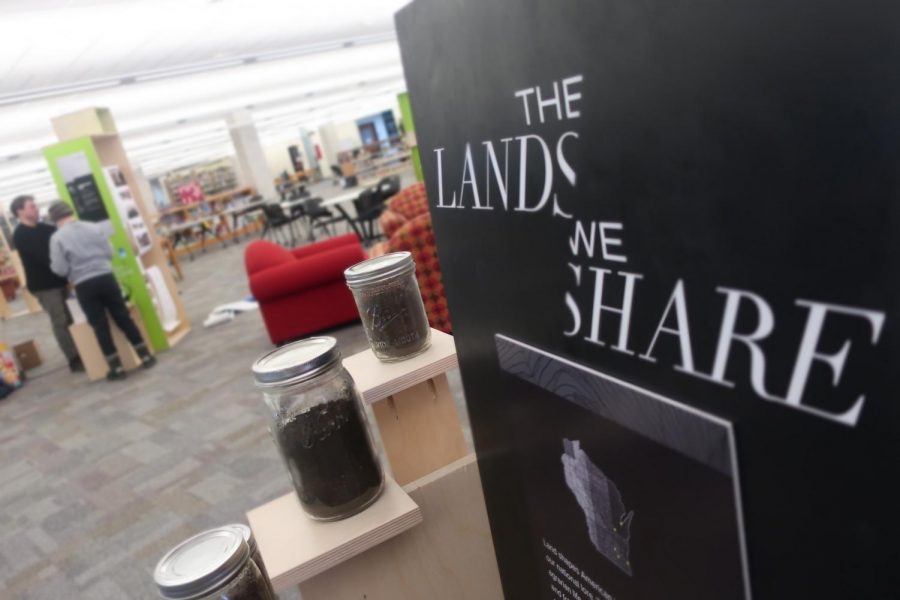Closer look at Wisconsin farms
Traveling exhibit stops at UW-W to share local history of agriculture
February 11, 2019
The traveling exhibit The Lands We Share made its way to Andersen Library this week, showcasing farming and culture across Wisconsin.
“This exhibit is the result of collaborative research from faculty and students at four UW campuses (UW-Whitewater, UW-Oshkosh, UW-Milwaukee, and UW-Madison),” said Sarell Martin, the outreach coordinator for Andersen Library. “[The exhibit featured] a traveling display and public dialogue that focused on the intersection between farming, land, ethnic culture and history in Wisconsin.”
The exhibit showcased five major farms across Wisconsin in locations such as Allenville, Oneida, Johnson Creek, Milwaukee and Fort Atkinson.
“These five farms tell these stories,” said James Levy, the coordinator of the exhibit and UW-W history professor. “We have gone to each of the regions where each of these farms are.”
Starting back in October, the exhibit (and its staff) began traveling all across Wisconsin to many UW campuses, informing the public, students and faculty about how diverse and widespread the agricultural field truly is in Wisconsin.
“This exhibit really asks us to consider the diversity of farming in Wisconsin,” Levy said. “If you think of the stereotype of farming, you think of dairy, male and rural. We’re trying to poke holes in that by telling stories of Hmong farmers, Native American farmers, [as well as] black, urban farming in Milwaukee.”
This is only one of the many goals this exhibit attempts to reach with its audiences.
“[The exhibit] is made to educate broadly, but the main goal is to engage people in dialogue,” Levy said. “A lot of exhibits are there just for people to visit, learn about, read and then leave. We’ve actually framed this exhibit as a ‘means to an end’, the end being community dialogue.”
For each location the exhibit travels to, the staff holds a community dinner where all the food is provided by farmers.
“We’ll invite 50-100 people and engage in conversations that this exhibit is supposed to trigger,” Levy said. “People also bring their own questions and issues to the table.”
Luckily, in a few instances, the conversations have been taken into classrooms.
“My [English] 102 students are doing a short assignment relating to The Lands We Share exhibit as a way of thinking about their research papers,” stated Rick Oehling, a professor at UW-W. “Many of their research papers will concern 20th Century American history.”
Oehling decided to bring the exhibit into his classes this semester by having his roughly 125 students attend the exhibit and analyze all the different aspects of the exhibit, basic information about the farms, to how each individual family played a part in Wisconsin’s history, culture and the exhibit overall.
“Most of the questions were designed to make the students look closely,” Oehling said.
Although the exhibit has left town, it will make its next appearance in Milwaukee starting Feb. 11. All are welcome to attend and learn more about their home state.













